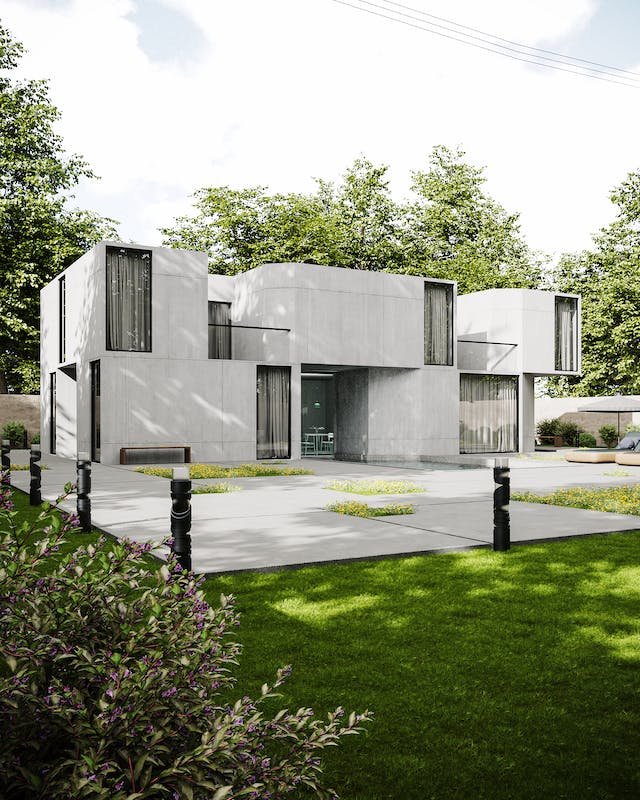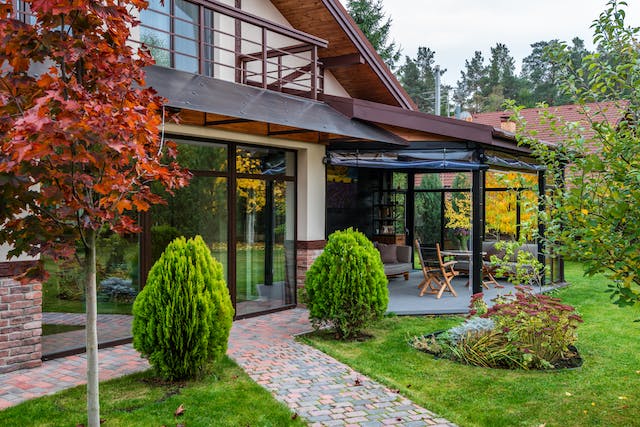Imagine you’re admiring your neighbor’s beautifully landscaped yard, envious of the way it transforms their property from a simple house to a stunning home.
You might be surprised to learn, however, that the benefits of landscaping extend far beyond mere aesthetics. Savvy homeowners know that a well-designed landscape can significantly boost a property’s value, enhance energy efficiency, and even contribute to overall health and wellbeing.
Want to know more? Stick with us as we explore some little-known facts and provide you with essential tips about landscaping.
Key Takeaways
- Soil type influences plant selection and watering, highlighting the importance of understanding the soil composition in landscaping decisions.
- Strategic tree placement can enhance energy efficiency in homes, emphasizing the dual benefits of shade in summer and sunlight in winter.
- Landscaping not only boosts property value but also contributes to energy savings through thoughtful design choices.
- Gardening and exposure to green spaces offer significant health benefits, promoting physical exercise, mental well-being, and healthy dietary choices.
The Science Behind Successful Landscaping
You mightn’t realize it, but there’s a scientific art to creating the perfect landscape for your home. It’s not just about choosing the prettiest flowers or the most majestic trees; there’s a whole lot more that goes into it. Consider the soil type, for instance. Is it sandy, clay, or loamy? Each type requires a different approach, from the plants you select to the watering schedule you follow.

Then there’s the sun. You’ve got to understand how it moves across your property throughout the day. It’s not enough to simply know where east and west are. You need to grasp how the changing seasons affect sun exposure. That patch of yard that’s bathed in sunlight during the summer might be in deep shade come winter.
And let’s not forget about the importance of proper drainage. It’s crucial to ensure that water isn’t pooling in certain areas, which could lead to plant death, or running off too quickly, causing soil erosion.
In essence, successful landscaping is a blend of science and art, each piece as vital as the next.
Landscaping’s Impact on Home Value
A well-designed landscape doesn’t just create an appealing outdoor space; it can significantly boost your home’s value in the real estate market. A lush lawn, blooming flowers, and mature trees aren’t just aesthetically pleasing but also signal to potential buyers that the property has been well-cared for.
There’s a strategic side to landscaping’s impact on home value too. Thoughtfully placed trees can reduce energy costs by providing shade in the summer and acting as windbreaks in the winter. Isn’t it enticing to know that your well-placed foliage could shave off a chunk of your energy bill? It’s a detail that savvy home buyers appreciate.
What about the hardscape – the patios, decks, and walkways? These elements add functionality to your yard and extend your home’s living space. And let’s not forget the curb appeal. A stunning front yard sets the tone for the rest of your property and can be a powerful first impression. So, when you’re planning that landscape, remember, it’s not just about creating your own personal oasis; it’s also about the added dollar value when it’s time to sell.
Energy Efficiency Through Strategic Landscaping
Building on the notion of landscaping’s influence on home value, let’s explore how strategic placement of trees and plants can enhance not just the aesthetic appeal, but also the energy efficiency of your home. Trees can act as natural barriers against the wind, reducing the need for heating in winter. In summer, they provide shade, cutting down on the use of air conditioning.
Choosing the right plants and placing them correctly is an art. Deciduous trees, for instance, can be positioned on the south and west of your home. They’ll provide shade in summer when they’re leafy and allow sunlight in winter when they shed their leaves. Evergreens, on the other hand, are great on the north and west sides to block cold winter winds.
Landscaping isn’t just about beautifying your space; it’s a silent partner in your energy efficiency efforts. A well-planned garden can be a powerful tool in controlling the microclimate around your home, leading to savings on energy bills. So next time you’re planning a landscaping project, keep energy efficiency in mind. It’ll pay off in more ways than one.
Health Benefits of a Well-Landscaped Yard
Beyond its aesthetic and energy-saving benefits, a well-landscaped yard can contribute significantly to your health and well-being. It’s more than just eye candy. It’s a natural haven that can positively impact both your physical and mental health.
Let’s delve into the details. Physically, the act of gardening itself is a fantastic form of exercise. It’s a whole-body workout that can help you maintain a healthy weight, lower your blood pressure, and improve your heart health. Plus, those vibrant flowerbeds and luscious vegetable patches aren’t just visually appealing. They’re also a source of fresh, organic produce that can boost your diet.
Mentally, a green space provides a serene sanctuary where you can unwind and de-stress. It’s an antidote to the urban buzz, a space where you can breathe in the calming scent of nature, listen to the soothing hum of insects, and feel the gentle caress of the breeze. Studies even suggest that exposure to green spaces can reduce symptoms of depression and anxiety.
Essential Landscaping Tips for Homeowners
Now that you’re aware of the numerous benefits of a well-maintained landscape, let’s dive into the nitty-gritty of crafting your own outdoor oasis with some essential landscaping tips.
First off, you’ve got to start with a clear plan. Think about your lifestyle, the nature of your property, and the climate in your region. These factors will help inform your choices of plants and layout.

Next, don’t forget about maintenance. Choose plants that you can easily care for, considering your schedule and gardening skills. Remember, the best-looking landscapes are those that are well kept.
Thirdly, pay attention to scale and pacing. It’s the secret to pulling off a polished look. You’ll want to have a variety of shapes, sizes, and colors, with a balance of consistency and diversity.
Lastly, don’t shy away from using native plants. They’re not only beautiful but also more likely to thrive since they’re adapted to your local climate and soil.
Conclusion
So, you see, landscaping isn’t just about curb appeal. It’s a science that can increase your home’s value, reduce energy costs, and even boost your health.
With these insights and tips, you’re now equipped to make your yard not only a beautiful sanctuary but also a strategic asset.
Remember, a well-landscaped yard is an investment that pays off in more ways than one. Now, go make your green thumb work wonders!






